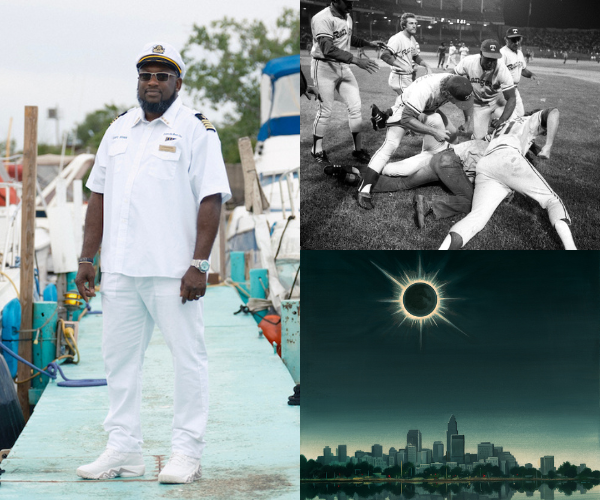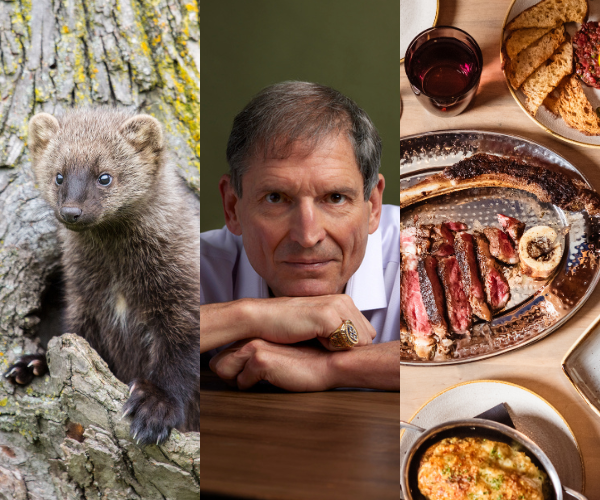This is what you do: Pick an evening in midautumn, maybe the first night when you can see your breath.
After the Friday football game has ended, the cigarettes sneaked in the bleachers are stubbed out and the bonfires of the after-parties are kindled, you steal off, you drive away from all of it. Gather your friends and pile into whoever's car is biggest. Boys and girls both. An even number is essential.
Take the back roads to Kirtland — or is it Chardon? — and follow them to Sperry Road — or Wisner? — maybe Heath? A gravel strip of a street. Follow it into the woods. Drive over a bridge whose structural integrity is questionable at best. Keep going.
You'll feel the place before you recognize it, but when you do, you park. Sit in the dark a moment before you gather the courage to flash your lights.
That's what calls them — the Melon Heads, the humanoid creatures who lurk these woods until a half-dozen unsuspecting teens present themselves as sacrifice.
I admit: It's not a perfect plan. Best to avoid the part where the Melon Heads emerge from the woods to slaughter and consume you. With any luck, you'll escape that danger. By the time you've parked, everyone should now be paired off, pulled into each other's arms and finding there the same sense of exhilaration and terror that drove you into the woods in the first place. There's really no danger from the Melon Heads themselves. But desire, sex, love — I know you know what trouble they cause.
Folklorists call it "legend tripping," this rite of passage common among adolescents, in which a group of teenage pilgrims visits the site where a local legend is said to have occurred or to reoccur.
A small academic industry traces instances of legend tripping deep into the forests of history, but I suspect it's as old as adolescence itself, that in-between time of neither-nor in which so many of our fantasies and fears first awaken. Add to that the in-between time of autumn, with summer a memory and winter a vague dread, when we believe (or make believe) that the veil between worlds is thinnest.
I first heard about the Melon Heads in eighth grade from Richie, who'd heard about them from Herb, whose knowledge of local arcana was legendary in its own right. Over the years, I've heard different versions of the details. But always, a demented doctor performs experiments on unfortunate children somewhere deep in the woods. The children become monsters who outlive their Frankenstein and survive to terrorize anyone foolish enough to pursue them.
It's not much, as far as legends go, but it was enough to get our attention. This was before dial-up Internet, in days when you had to tune through the static of word of mouth. Even then, well before Google produced the obscurest of obscurities within a mouse click, rumor sparked through junior high as if by fiber-optic cables.
Still, I couldn't have known then what the information age has made available now. I couldn't know that Michigan and Connecticut both have their own versions of Melon Heads, that kids in Louisville hunted the Pope Lick Monster, or that in Baltimore they sought the statue of Black Aggie. I was sure that a gate between this world and another just happened to open right here in my own county. I didn't know that scholars had already given it all a label.
I wonder if today's kids have it better or worse. I often bristle at the idea that their adolescence is that much different than mine, or mine from my parents'. But I also sadden to imagine smartphone screens illuminating those darkened cars, or the disembodied voice of the GPS directing this year's teens straight to the Melon Heads' lair.
After all, it was the romance of not knowing, but wanting to know, that called us in the first place. My generation and my parents' and their parents', were blessed with an ignorance that allowed mystery ample time to ripen. Even our loss of innocence seems innocent by comparison.
Instead, you can read all about the Melon Heads, the Pope Lick Monster and the Aggie statue on hundreds of Web pages and message boards. Years of supposed encounters are collated into a single thread, and the story continues.
The world isn't smaller; it's just more mapped. Even the other world. Maybe what we've lost in word of mouth we've gained in words on screens — a bit less romantic, perhaps, but every bit as anonymous as the friend of a friend from whom you likely first heard this or that tale.
No one ever found the Melon Heads. Generations of seekers have all shown up at school again the next Monday, alive and well, if slightly scratched and hickeyed. We never found them, and I suspect no one ever will.
But all those trips into the dark proved something else: They showed that the world as it is isn't enough.
We live in fears and fantasies as much as we do in the here and now. Even now in my skeptical, wireless adulthood, I'm still in thrall to the idea that when I look into the dark, someone else might look back.
Trending
-
1
-
2
-
3
-
4
-
5










